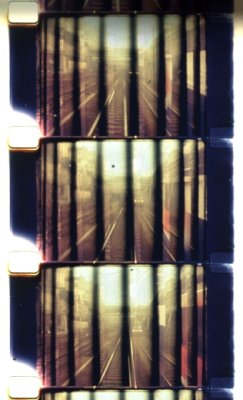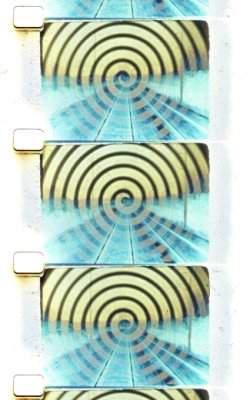

2006, France, 16mm, colour, sound, 12 min.
Cinema is about the illusion of movement. The film strip is made up of individual pictures in succession. The ? phenomenon explains how the brain creates bridges from frame to frame, filling in the gaps, creating the illusion of smooth movement during the black intervals between frames. The perception of movement is processed in areas 17 and 18 of the visual cortex. Neurons in V1 and V2 are responsible for identifying objects in motion, their speed and direction, and global motion across the visual field. This information is processed and passed down to V5/MT where all stimuli are integrated, specific neurons determining specific perceptions, such as upward motion or forward motion. These perceptions can be tricked - cells adapt to motion stimuli and in the absence of that stimuli, produce the opposite perception. Staring into the center of the turning spiral causes forward motion detectors to adapt to that stimulus; the still picture of the train then appears to swell out.
This film follows research started in Charlemagne 2: Piltzer which concentrated on the perception of colour and the creation of phantom colours not present on the film strip through flickering. In Faux Mouvements, forward and backward motions occur together, movement in different directions is combined. We perceive motion in images that are in fact still. We can also see references to the spiral of the film reel, and the negative and positive of the film process.
Pip Chodorov
